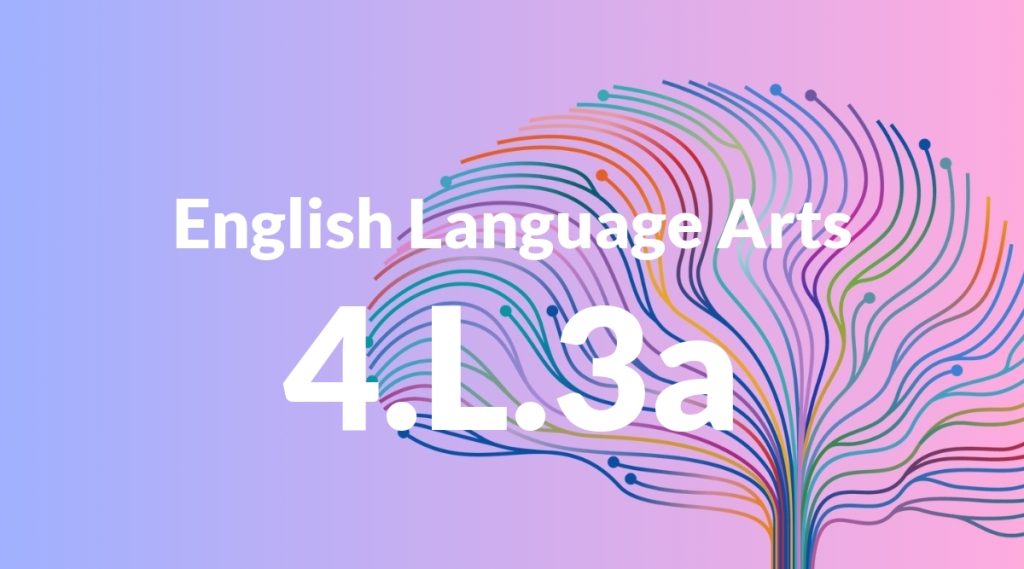Standard: 4.L.3 – Use knowledge of language and its conventions when writing, speaking, reading, or listening.
Grade level: Grade 4
Subject: English Language Arts
Domain: Language
Teacher Overview
This standard emphasizes the importance of understanding and using language conventions across all forms of communication, including writing, speaking, reading, and listening. Mastering this standard will help students become effective communicators, which is essential for their academic and personal success. Students should have a foundational understanding of basic grammar, sentence structure, and punctuation. They should also be comfortable with basic speaking and listening skills.
After mastering this standard, students will be able to apply their knowledge of language conventions to more advanced writing tasks, such as persuasive essays, and improve their public speaking and comprehension of complex texts.
Common Misconception 1
Some students may think that language conventions are only important in writing. This is incorrect because language conventions are crucial in all forms of communication, including speaking and listening. Without proper conventions, communication can become unclear and confusing.
Intervention 1
To address this misconception, provide activities that highlight the importance of language conventions in speaking and listening. For example, have students role-play conversations or give oral presentations, emphasizing the use of proper language conventions.
Common Misconception 2
Another common misconception is that once a language rule is learned, it applies universally. However, language conventions can vary depending on the context, such as formal vs. informal situations. This understanding is crucial for effective communication.
Intervention 2
Use examples and activities that show how language conventions change based on context. For instance, compare formal writing tasks with informal conversations to illustrate the differences in language use.
Prerequisite Knowledge
Students should have a basic understanding of grammar, sentence structure, and punctuation. They should also be familiar with basic speaking and listening skills, such as taking turns in conversation and understanding simple instructions.
Subsequent Knowledge
Students will develop advanced writing skills, including the ability to craft persuasive essays and narratives. They will also improve their public speaking abilities and gain a deeper understanding of complex texts.
Instructional Activities
- Writing and peer-reviewing short stories
- Role-playing different conversation scenarios
- Giving and receiving oral presentations
- Analyzing and discussing various texts




